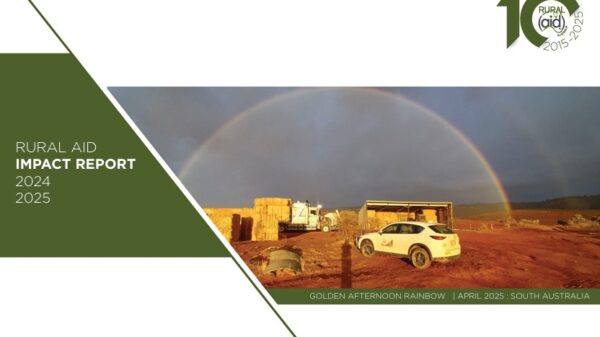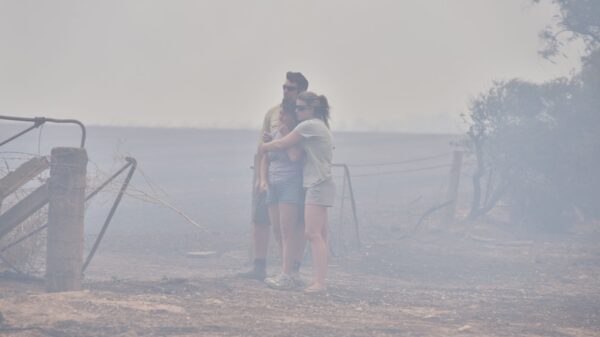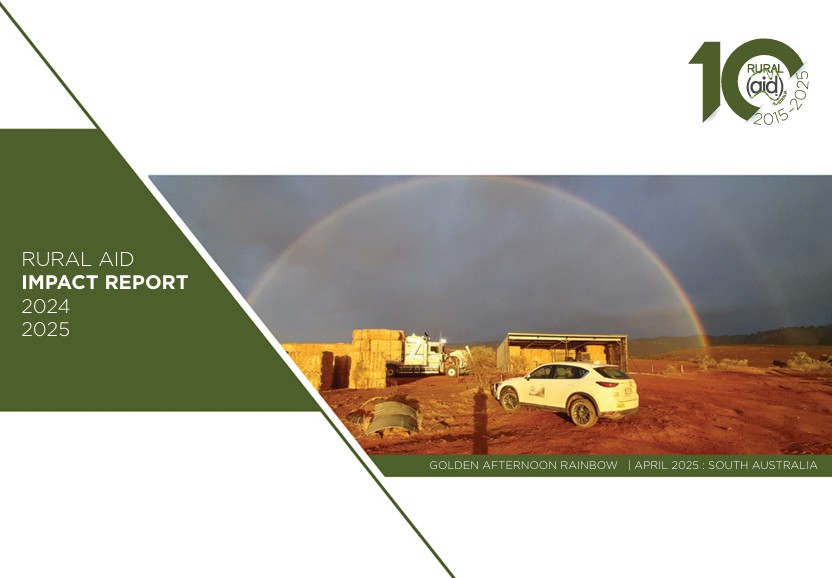UPDATE: Rural Aid’s newly released 2024/25 Impact Report highlights an urgent need for support in rural Australia, revealing that registrations of farming families have doubled compared to last year. This alarming trend underscores the escalating challenges faced by these households amid persistent droughts and financial stress.
The report, published on November 24, 2025, indicates that nearly 1,500 farming families received critical assistance this year, a clear sign of the mounting pressures in regions like South Australia and Victoria. As drought conditions worsen, farmers are battling severe feed shortages and dwindling water supplies, further exacerbating their struggles.
Rural Aid stepped in with vital resources, delivering 10,000 hay bales to help farmers sustain their livestock and alleviate emotional burdens. Additionally, the organization provided 170 water tanks and almost 12 million litres of household water, ensuring families have reliable access to safe drinking water—a basic necessity that becomes increasingly precarious during extended dry spells.
Financial aid was also a significant focus, with assistance granted to over 530 farming families to help them maintain operations and livelihoods amidst the crisis. Moreover, 145 volunteers dedicated over 5,500 hours across 35 farms, fostering community ties and reducing feelings of isolation among farmers during these challenging times.
Beyond immediate aid, Rural Aid is committed to enhancing the mental wellbeing of rural communities. Nearly 2,000 free counselling sessions were provided to farmers and their families, addressing issues related to natural disasters, anxiety, and financial uncertainty. The Mustering Growth schools program also equipped nine schools with essential tools to bolster mental resilience in children, ensuring the future wellbeing of the next generation in rural Australia.
Rural Aid CEO John Warlters emphasized the organization’s comprehensive approach to support, stating,
“Rural Aid is there for farmers and their communities before, during and after natural disasters.”
He reiterated the importance of not only providing immediate relief but also standing alongside farmers as they prepare, recover, and rebuild.
This year, Rural Aid’s efforts extended to communities impacted by significant events including the floods in Western Queensland and ongoing drought conditions in South Australia. As Mr. Warlters articulated,
“Their wellbeing, their livelihoods, and their communities remain at the heart of everything we do.”
Looking ahead, the organization seeks to expand its reach and impact, ensuring that farming families across the nation have access to the assistance they urgently need. Supporters are encouraged to take action by helping through initiatives like Buy a Bale or Fill a Tank, directly aiding farming families during this critical summer period.
With the ongoing commitment from partners and supporters, Rural Aid aims to transform lives and foster resilient farming communities. For more information or to donate, visit www.buyabale.ruralaid.org.au.
The 2024/25 Impact Report is a part of Rural Aid’s Annual Report, which can be accessed at www.ruralaid.org.au/annual-reports/2024-2025/. As Australia’s leading rural charity, Rural Aid has been a lifeline for farmers since 2015, helping them navigate hardships and build sustainable futures.






























































